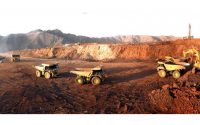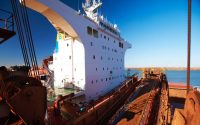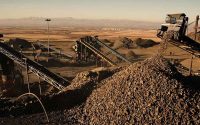Seaborne iron ore prices in China are less likely to witness significant decline in Nov’17, said Mr. Keyvan Jafari Tehrani, CEO at Jame Tejarat Co. (JTC). Following are the excerpts from SteelMint interview with Mr. Tehrani.
- How do you see sustainability of recent price fall in Chinese iron ore prices ? Do you think prices will fall further ?
Yes, it is. I believe main drop in prices will be during Dec-Jan. Prices fell significantly towards end of last week. But in Nov there is chance that prices will recover and towards the end of Nov there are chances that prices go above USD 60/MT, CFR China mark and maintain around USD 62-63/MT, CFR. Towards the end of Nov’17, winter season starts in China which leads to less construction activities during that time. This may in turn reduce iron & steel demand remarkably which may adversely affect prices.
- Will recent production cuts by Chinese steel mills put iron ore prices in China under pressure?
Chinese govt. is trying to reduce/omit old capacities or substandard capacities having production say below 1-2 MnT pa. This will definitely put iron ore prices under pressure. Towards end of the year Chinese govt. strictly imposes more regulations owing to environmental concerns to curb air pollution.
- How are sentiments prevailing in Iran iron ore export market ?
Iranian govt. is not so far so happy for iron ore exported from country and has been always saying regarding some export duty to be imposed or they believe to be imposed. Iranian iron ore producers have withhold government from imposing export duty as prices in global market are trading at lower levels and international market is not supportive for Iranian exporters.
Iron ore prices in China is expected to continue to be lower side in early 2018. After 20th Communism Committee to be organized in early Mar’18, govt will announce road & belt projects.
Share of iron ore exports from Iran to China have come down on yearly basis. In 2013, Iran exported nearly 23.5 MnT iron ore occupying 2.5% share of seaborne iron ore market imported to China. Now this share has reduced to 1%. Reason behind fall in share is rise in iron ore export volumes from other countries.
China contributes for a share of nearly 91% in Iran’s iron ore exports and weaker sentiments hampered Iranian iron ore exports. Iranian iron ore exporters tried to cater to other markets like Japan, South Korea & Turkey but owing to sanctions issues it turned out difficult and prices were less competitive. Therefore Iranian iron ore exporters have been primarily exporting iron ore to Chinese steel mills through Chinese traders based in Hong Kong, Shanghai and Singapore.
- What are currently trade prices for Iran iron ore fines (Fe 58/57%) and high grade fines (Fe 63/62%) in FoB basis?
Most of the regular Haematite & Magnetite cargoes of Fe 58/57% are trading in accordance with benchmark indices (Fe 58%) depending on alumina content and cargo quality. High grade cargoes Fe 63/62% are traded at benchmark index Fe 62%. If cargo is from Sangan area (north east Iran) magnetite with low impurities it is trading at slightly higher than benchmark index.
- What are current vessel freight rates from Iran to China for Panamax and Supramax vessels? Has there been any changes in last 10 days?
Most of the vessels loading iron ore from Iran are Supramax and currently the vessel freight is around USD 15.5-16/MT from Iran to China. For Panamax vessels (65,000-75,000 MT) iron ore vessel freight from Iran to China is around USD 14.8-15. In last 10 days, freight reduced by minimum 20 cents.
- Are Iranian iron ore miners focussing on domestic sales or preferring exports?
Private miners prefer exports but owing to low realizations and less competitive prices, they are preferring domestic sales. Demand for high grade iron ore in Iran is quite strong with domestic steel mills in Iran than medium & low grade.





